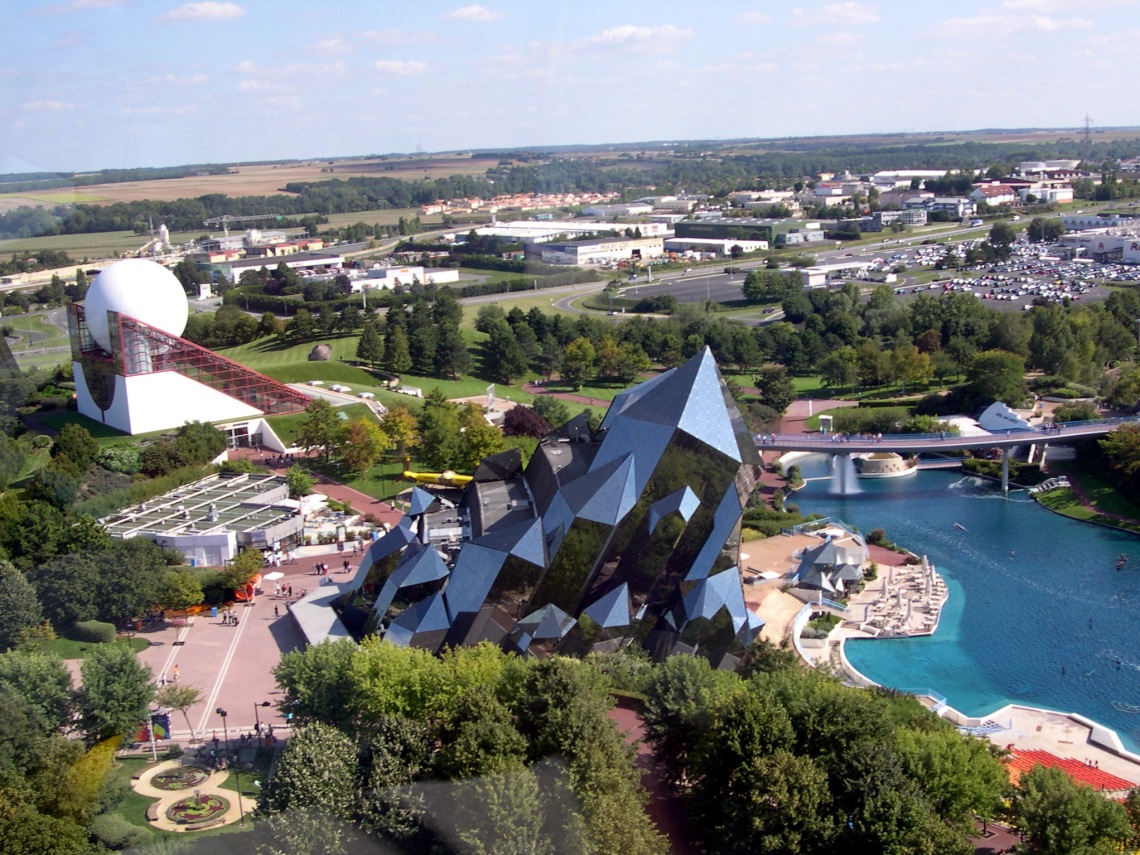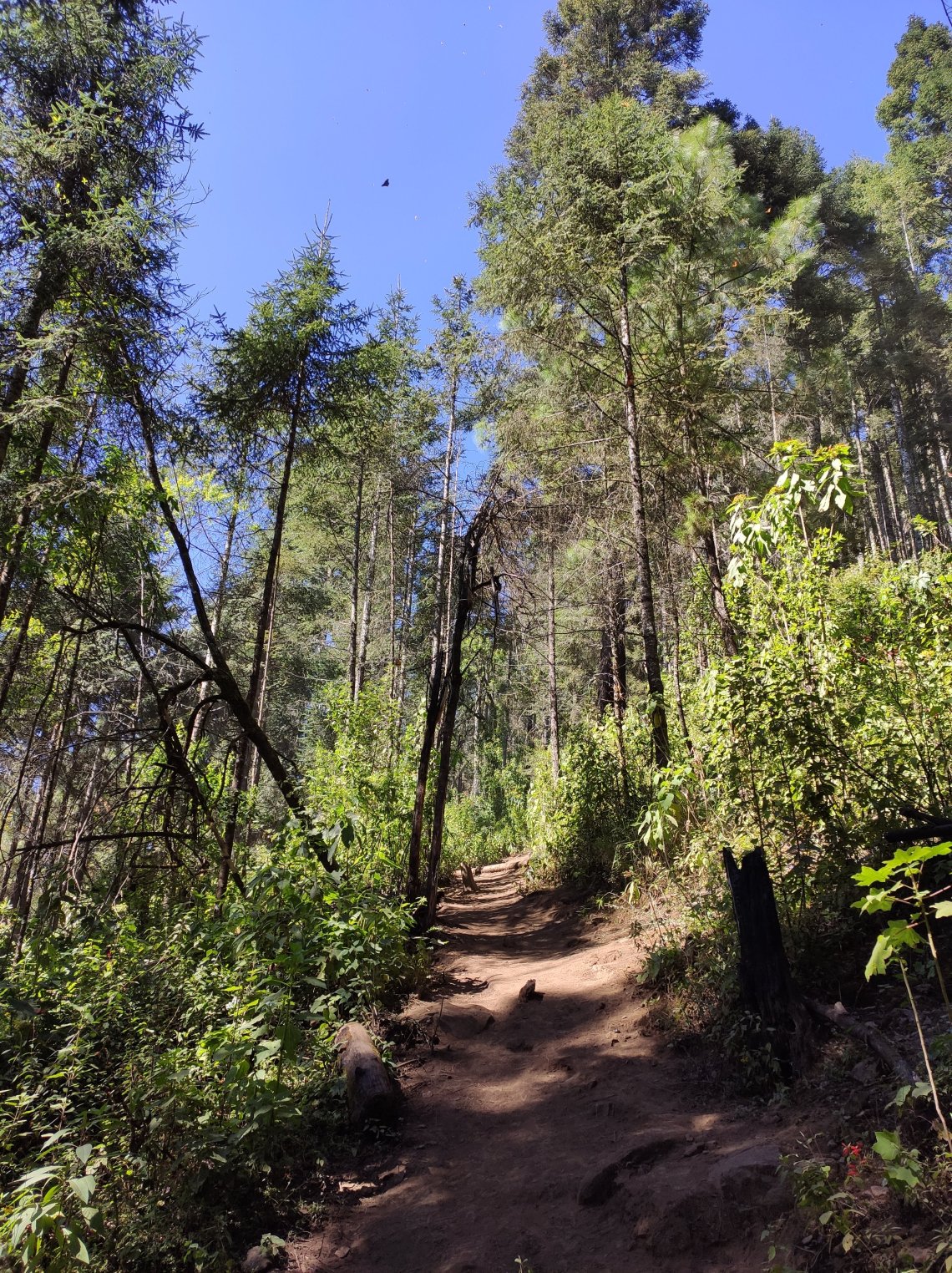A long, long time ago, when I was very young, I went to a place in France called Futuroscope. Futuroscope was an amusement park, of sorts, as well as being a vision of ‘The Future’ (in the same way as the Docklands Light Railway once was), and the very definition of ‘edutainment’.

At the time, I think I had been pestering my mum and dad to take me and my sister to Disneyland Paris, or at the very least Parc Asterix. These were considered far too mainstream, however, and so it was to Futuroscope, just outside Poitiers, that we went (to be totally fair to my parents they did subsequently take us to Parc Asterix. Twice, I think).
My memories of this vision of the future are hazy, to say the least. I remember a lot of domes, floating bicycles with giant, inflatable wheels that you pedalled around a lake, and innumerable giant, iMax-style cinema screens. The one thing that truly stands out in my mind, through the fog of time and memory, is the Monarch Butterfly Experience. This was an immersive journey into the remarkable migration of the monarch butterflies, from the Rocky Mountains in Canada to the beautiful butterfly forests of Michoacan, Mexico. I imagine the experience would seem dated and quaint today, but at the time it was extraordinary, conjuring up the sensation of being surrounded by thousands of fluttering sprites dressed in orange and black, and giving a sense of the truly awesome journey they undertake down the west coast of the American continent.
I had, if I’m honest, essentially forgotten all about this, until I arrived in Mexico City. Discovering myself less than two hours from the monarch butterfly reserves in the forested mountains just to the west of the city brought it all back, and with it that sense of wonder and excitement that I’d felt all those years ago. This is genuinely one of the most amazing natural phenomena on the planet, and an almost unique experience…which makes it all the more surprising that it took me until January this year to actually head out to the biosphere reserve near Valle de Bravo.

From the moment we arrived, I was enthralled. Even the car park was alive with little orange specks, floating in, settling, then moving off again almost before you had registered that they were there. This stunning snowfall of these delicate, beautiful insects brought the otherwise fairly normal parking lot and ticket office area to life, a staccato shimmer to the air and a flash of colour out of the corner of one’s eye, every moment. The whole scene had a sort of old, black-and-white film quality to it, stuttering and flickering and yet completely compelling.
This was, of course, just the beginning. We began an epic trek into the forest and up the mountains, and around every corner the clusters and clouds of butterflies intensified. I had ever so slightly underestimated the physical challenge of the experience, and what had been billed as ‘a gentle two hour walk with a bit of a climb’ became a genuinely gruelling four hour hike, at times almost straight upwards, into the ever-thinning air of the mountains HIGHER than Mexico City’s already impressive 2,500 metre altitude. While this was an exciting if challenging experience for me, it was a potential death sentence for my mum and stepdad. They rose to the challenge in extraordinary fashion, however, only baulking at the final ascent. As this resembled a literal hands-and-knees scramble climb, this seemed like a perfectly reasonable decision.

I’ve never seen anything quite like the flocks of butterflies at the top. The sun-dappled trees above us were moving with little orange spots of light, and everywhere you looked the forest was alive with shifting, fluttering creatures. It was, in the most literal sense of the word, awesome. There is no real way to describe what it is like to be almost completely surrounded by these beautiful, ethereal creatures without sounding ridiculous or superlative, so suffice it to say that this was one of the most intense experiences of my life, truly unique, and something anyone who comes to Mexico should try to experience for themselves. Indigenous legends describe butterflies as ‘lovers of the sun’ and believe them to be the souls of the dead, as they tend to return to Mexico around Dia de los Muertos. A wonderful thought that seemed extremely plausible at this moment.
There is, however, a tragic, sad and shocking addendum to all this natural beauty and wonder. Roughly a week after our visit, a man named Homero Gomez went missing.
Homero Gomez was an environmental activist who lived for the monarch butterflies, and had spent his life fighting to protect the environments that allow their almost unbelievable adventures from Canada to Mexico to happen. It is almost inconceivable that greed should override something as special and unique as this remarkable phenomenon (is it though?), but illegal logging and narco-controlled avocado farming have already led to the destruction of much of the butterflies’ habitats, drastically reducing migration numbers and putting the future of the species at risk. Gomez promoted the remarkable beauty of the butterflies on social media, took an active role in protecting the reserves against illegal incursions and destruction, and helped to implement the vital tourist industry that could replace the logging economy.
En el Santuario El Rosario Ocampo Michoacan “ El más grande del mundo “ pic.twitter.com/WlCJuOcG4Q
— Homero gomez g. (@Homerogomez_g) January 12, 2020
Three weeks after our visit, Homero Gomez was found dead, in a well, his body showing signs of torture. A shocking and devastating crime, against a man fighting to protect one of the world’s most amazing natural phenomena, and some of its most beautiful and delicate creatures. As poet Homero Aridjis said: “If they can kidnap and kill the people who work for the reserves, who is going to defend the environment in Mexico?”
Days after the body of Homero Gomez was found, a second guide at the butterfly reserve, Raúl Hernández Romero, was also found murdered.

I don’t want to end this post on such a bleak note. While the deaths themselves are horrifying tragedies, and those who committed them and profit from the destruction of the natural world are vile, valueless creatures, the work of people like Homero Gomez and Raul Hernandez Romero is inspiring. Seeing the butterflies is a magical, out-of-this world experience, and the lesson to be learned from the tragic events is that we should all fight to protect extraordinary, mystical places like this that exist in the world. Visit the reserves if you can, contribute to the economy that keeps them protected and support conservation efforts. Once they are gone they can’t come back.
We visited the Santuario Pierra Herrada, between Toluca and Valle de Bravo. It is easily accessible by car from Mexico City (about an hour and forty five minutes drive), although there are a bunch of tours who run day trips. The entrance to the sanctuary is an bafflingly bargainous $80 MXN (around £3), and includes a guide. The trek to the top is arduous and challenging, uphill and at altitude, but well worth it. You can also pay a little extra for a horse to take you to the top! Tip your guides well, and support the wonderful work they do.

















This time I don’t need to dream of going there. It was magical. And you make it sound magical. Mx
LikeLiked by 1 person
Very well-described. Thank you.
LikeLiked by 1 person